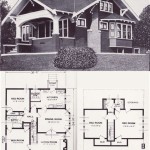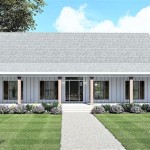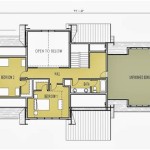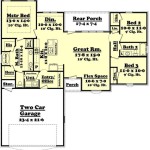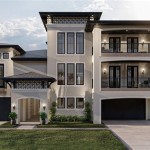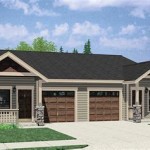House Plans With a Wrap Around Porch: Design, Functionality, and Considerations
House plans with a wrap-around porch represent a classic architectural style that combines aesthetic appeal with practical outdoor living space. These designs have a long history, rooted in the desire for comfortable shelter and a connection with the surrounding environment. The wrap-around porch provides a versatile transitional area between the interior of the home and the exterior landscape, offering opportunities for relaxation, entertainment, and enhanced curb appeal.
The popularity of house plans with wrap-around porches stems from several factors, including their ability to create a welcoming atmosphere, extend the living area during favorable weather, and enhance the overall value and desirability of a property. Furthermore, the porch offers protection from the elements, shading windows from direct sunlight during hot months and providing a covered space during rain or light snow. This article explores the key aspects of house plans with wrap-around porches, including their design elements, functional benefits, and crucial considerations for homeowners.
Defining Features of a Wrap-Around Porch
A wrap-around porch is defined by its continuous extension along two or more sides of a house. This design feature typically encompasses the front of the house and extends along at least one, and often both, side walls, effectively "wrapping" around a significant portion of the building's perimeter. The porch usually features a roof, supported by columns or posts, providing shade and protection from inclement weather. The design can vary widely, ranging from simple, unadorned structures to elaborate, multi-tiered constructions featuring intricate detailing and ornate railings.
Historically, wrap-around porches were common in rural areas and were particularly prevalent in farmhouse and Victorian architectural styles. In these contexts, the porch served as a central gathering place for families and neighbors, facilitating social interaction and providing a comfortable space to enjoy the surrounding landscape. Over time, the appeal of the wrap-around porch has transcended specific architectural styles and geographic locations, becoming a desirable feature for a wide range of house designs.
The size and configuration of a wrap-around porch can be tailored to suit the homeowner's specific needs and preferences. Some porches may be relatively narrow, providing just enough space for a couple of chairs and a small table, while others may be generously sized, accommodating outdoor dining areas, seating arrangements, and even outdoor kitchens. The choice of materials for the porch flooring, columns, railings, and roof supports can also significantly impact the overall aesthetic and durability of the structure. Common materials include wood, composite decking, brick, stone, and various types of metal.
Functional Benefits of Wrap-Around Porches
Beyond their aesthetic appeal, wrap-around porches offer a multitude of functional benefits that contribute to the comfort, convenience, and value of a home. One of the primary advantages is the extended living space they provide. The porch acts as an outdoor room, allowing homeowners to enjoy the fresh air and natural surroundings while remaining sheltered from the elements. This can be particularly valuable during warm-weather months, when the porch can serve as an alternative to indoor living areas.
The porch also enhances the home's connection with the surrounding landscape. It provides a transitional space between the interior and exterior, allowing homeowners to seamlessly move between the two environments. This connection with nature can have positive effects on mental and physical well-being, promoting relaxation and reducing stress. Furthermore, the porch offers opportunities for gardening and landscaping, allowing homeowners to create a welcoming and visually appealing entrance to their home.
Another significant benefit of a wrap-around porch is its ability to provide shade and protect the interior of the home from direct sunlight. This can help to reduce energy consumption by lowering the demand for air conditioning during hot weather. By shading windows and walls, the porch effectively blocks heat from entering the home, keeping interior temperatures cooler and more comfortable. This can result in significant cost savings on energy bills over time.
The flexibility of a wrap-around porch also lends itself to a variety of uses. Depending on the size and configuration of the porch, it can be used for entertaining guests, relaxing with family, reading a book, or simply enjoying the view. Some homeowners choose to furnish their porches with comfortable seating, outdoor lighting, and even outdoor televisions or sound systems, creating a fully functional outdoor living space. The porch can also serve as a convenient entryway to the home, providing a sheltered space to remove shoes and coats before entering the interior.
Additionally, a wrap-around porch can enhance the curb appeal and resale value of a home. The porch creates a visually appealing and inviting facade, making the home stand out from others in the neighborhood. This can be particularly attractive to potential buyers, who often view the porch as a desirable feature that adds value and character to the property. A well-maintained and aesthetically pleasing porch can significantly increase the perceived value of a home and make it more attractive to potential buyers.
Key Considerations When Planning a House With a Wrap-Around Porch
When considering a house plan with a wrap-around porch, several key factors should be taken into account to ensure that the design meets the homeowner's specific needs and preferences. One of the most important considerations is the orientation of the house and the porch. The direction in which the porch faces will significantly impact the amount of sunlight it receives and the views it offers. Ideally, the porch should be oriented to take advantage of natural light and scenic views while minimizing exposure to harsh sunlight and prevailing winds.
The size and configuration of the porch should also be carefully considered. The porch should be large enough to accommodate the intended uses, such as outdoor dining, seating, or entertaining. The width of the porch should also be sufficient to allow for comfortable movement and furniture placement. The overall design of the porch should complement the architectural style of the house and create a cohesive and visually appealing aesthetic. This includes selecting appropriate materials for the flooring, columns, railings, and roof supports.
The materials used in the construction of the porch should be durable and weather-resistant. Wood is a popular choice for porch flooring and framing, but it requires regular maintenance to prevent rot and decay. Composite decking is a low-maintenance alternative to wood that offers similar aesthetic appeal and durability. The columns and railings should be made of materials that can withstand the elements and provide adequate support and safety. Common materials include wood, metal, and composite materials.
Another crucial consideration is the roof design. The roof of the porch should be designed to effectively shed water and prevent leaks. The pitch of the roof should be sufficient to allow rainwater to drain properly, and the roofing materials should be durable and weather-resistant. The roof overhang should also be sufficient to protect the porch from direct sunlight and rain. The roof design should also complement the architectural style of the house and create a cohesive and visually appealing aesthetic.
The lighting and electrical needs of the porch should also be carefully planned. Adequate lighting is essential for creating a comfortable and inviting outdoor living space. This should include both ambient lighting, such as overhead fixtures, and task lighting, such as spotlights or lanterns. Electrical outlets should be strategically placed to provide power for outdoor appliances, such as lights, fans, and televisions. The electrical wiring should be weatherproof and properly grounded to ensure safety.
Finally, the landscaping around the porch should be carefully planned to enhance the overall aesthetic and functionality of the space. Planting trees, shrubs, and flowers can create a welcoming and visually appealing entrance to the home. The landscaping should also be designed to provide shade and privacy, creating a comfortable and relaxing outdoor environment. The landscaping should be maintained regularly to keep it looking its best and prevent it from overgrowing the porch.
In summary, house plans with wrap-around porches offer a unique blend of aesthetic appeal, functional benefits, and enhanced outdoor living space. By carefully considering the design elements, functional needs, and key considerations involved in planning a wrap-around porch, homeowners can create a valuable addition to their home that enhances their quality of life and increases the value of their property.

Wrap Around Porch House Plans For A 4 Bedroom Country Home

Wrap Around Porch House Plans
:max_bytes(150000):strip_icc()/HOH_SL1254-d5dcd603b4e042e7852fbb2e93f2e0a5.jpg?strip=all)
13 House Plans With Wrap Around Porches

3 Bedroom Open Floor Plan With Wraparound Porch And Basement

Country Style House Plan With Wrap Around Porch

3 Bedroom Country Home Floor Plan With Wrap Around Porch 138 1002

Southern Living Dreamy House Plans With Front Porches Blog Dreamhomesource Com

Complete Wrap Around Porch 58304sv Architectural Designs House Plans
:max_bytes(150000):strip_icc()/southern-living-house-plans-porch-18324aaa8f98476dbfab68520914c229.jpeg?strip=all)
These Southern Living House Plans Have Dreamy Porches
:max_bytes(150000):strip_icc()/HOH_SL1482-df5abe9d7ee44f7a9f29e0a7b412b06c.jpg?strip=all)
13 House Plans With Wrap Around Porches

